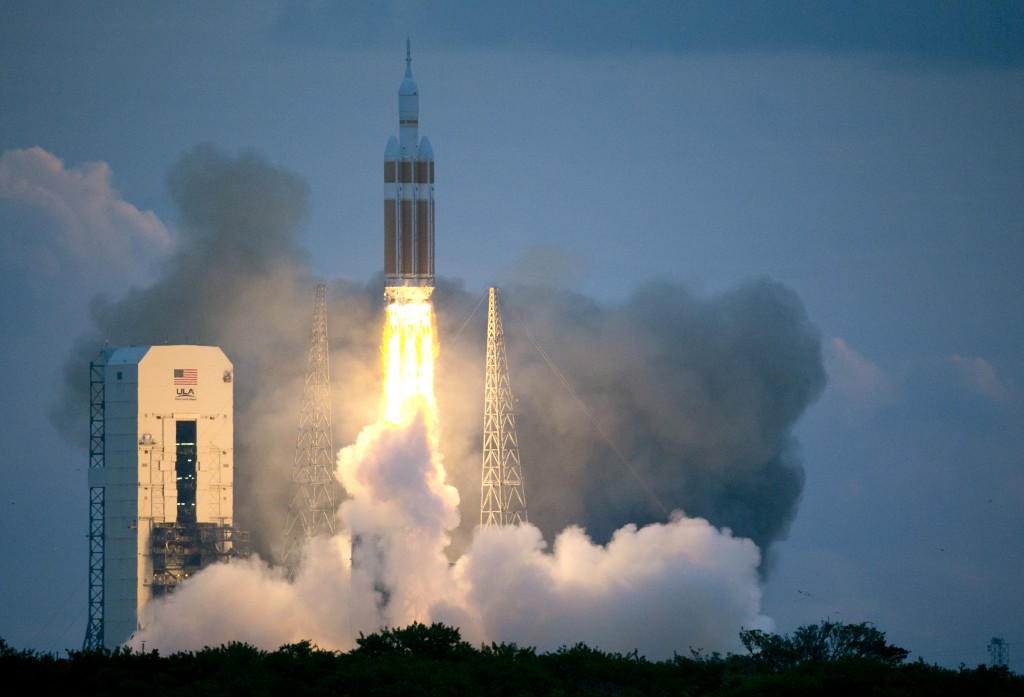- California Assembly OKs highest minimum wage in nation
- S. Korea unveils first graphic cigarette warnings
- US joins with South Korea, Japan in bid to deter North Korea
- LPGA golfer Chun In-gee finally back in action
- S. Korea won’t be top seed in final World Cup qualification round
- US men’s soccer misses 2nd straight Olympics
- US back on track in qualifying with 4-0 win over Guatemala
- High-intensity workout injuries spawn cottage industry
- CDC expands range of Zika mosquitoes into parts of Northeast
- Who knew? ‘The Walking Dead’ is helping families connect
NASA successfully launches Orion spacecraft

The NASA Orion space capsule atop a Delta IV rocket, in its first unmanned orbital test flight, lifts off from the Space Launch Complex 37B pad at the Cape Canaveral Air Force Station, Friday, Dec. 5, 2014, in Cape Canaveral, Fla. (AP Photo/John Raoux)
CAPE CANAVERAL, Fla. (AP) — NASA’s new Orion spacecraft made a “bull’s-eye” splashdown in the Pacific on Friday following a dramatic test flight that took it to a zenith height of 3,600 miles and ushered in a new era of human exploration aiming for Mars.
The unmanned test flight ended 4½ hours after it began and achieved at least one record: flying farther and faster than any capsule built for humans since the Apollo moon program.
NASA is counting on future Orions to carry astronauts beyond Earth’s orbit, to asteroids and ultimately the grand prize: Mars.
“There’s your new spacecraft, America,” Mission Control commentator Rob Navias said as the Orion capsule neared the water.
Navies called the four-hour, 24-minute journey “the most perfect flight you could ever imagine.”
NASA said the capsule’s computers were not affected by high radiation, one of the key questions they hoped to answer with the test.
Orion’s return was captured by an unmanned drone flying over the recovery zone, providing spectacular views of the descending capsule. Helicopters then relayed images of the crew module bobbing in the water. Three of the five air bags deployed properly, enough to keep the capsule floating upright.















